HAJJ-MY JOURNEY OF FORGIVENESS, REDEMPTION AND REBIRTH
Walking in the footsteps of Adam, Abraham and Muhammad
Join Dr. Idries as he explores the holy Saudi Arabian city of Medinah before starting the Hajj pilgrimage.
FORWARD: Hajj was never something I really wanted to do.
Hajj is a required journey for every physically and financially able Muslim at least once in his or her lifetime. I have to be completely honest, while Hajj was something that I’ve always known I would have to do, it was never something that I ever wanted to do. Sure Hajj is supposed to be this great spiritual journey, but I rarely heard any positive Hajj experiences from family and friends that had gone before me. Even the stories that were presented in a positive light honestly seemed pretty dreadful to me. So my head was filled with horror stories about the crowds (2-4 million people in a very confined space), the heat (think Saudi Arabia in the summertime, enough said), the conditions which could politely be described as unhygienic and of course the occasional mass casualty due to trampling’s or fires. Disney World Hajj is not. This meant years of excuses when my better half brought up the idea of making Hajj. Sometimes finances were the excuse (Hajj ain’t cheap folks), other times family (new babies) or career (residency, starting and nurturing a new private practice, etc…) were the excuses, but the overall theme was the same: I just wasn’t ready to go. Every Hajj pilgrim leaves home with the understanding that he or she very well may not return. You’re supposed to get all of your affairs in order and stated bluntly, you’re supposed to prepare yourself for death. So the idea of Hajj definitely scared me.
On the other side of it all now, I’ve come to realize that what makes Hajj so scary is the same thing that makes it so inexplicably beautiful simultaneously rewarding. Human beings spend a great deal of our lives trying to control our destiny from big things like our education and career choices to smaller things like the route we take to work. During Hajj however, you relinquish all control and for five days you are one with God (quite paradoxically so since you are surrounded by millions). For five days you are a mere speck in the mass of humanity that has converged from every corner of the globe with the shared sole purpose of worshiping God and self improvement. For this finite period of time you have absolutely zero control over your surroundings, zero control over your activities and zero control over your fate. While this probably sounds viscerally unappealing to most folks, it quickly not only becomes okay but it becomes welcome, even for a type A control freak like yours truly. You really learn what it means to let go and let God. All of the preceding years when I made excuse after excuse to avoid Hajj, the reality was that it just wasn’t my time. Through this journey I came to realize that you will never be ready for Hajj until Hajj is ready for you. Hajj is a deeply personal transformative journey and it means different things to different people. God knows when your heart and your soul is most in need of this transformation and for me that time was now. It was time for my personal journey of forgiveness, redemption and rebirth; it was my time to make Hajj.
WHAT IS HAJJ?:
Hajj is one of the so called “five pillars of Islam” that guide the lives and daily activities of every Muslim. The other pillars are the declaration of faith to one God (Shahadah), praying five times a day to that one God (Salat), fasting during the month of Ramadan and giving charity to the poor (Zakat). Hajj in particular is the holy pilgrimage to the city of Mecca that each financially and physically able Muslim must make at least once in their lifetime. There are specific rites that pilgrims must perform on each of the five days of Hajj. The purpose of these rites is to connect the pilgrim to God, allowing him or her to bear their soul and their sins, seek forgiveness and work towards renewal and rebirth. Many of the rites recreate the actions of prophets Adam, Abraham (his wife Hagar and son Ismael) and Muhammad and they have been in existence for centuries.
BEFORE HAJJ: Chilling in Medinah.
Medinah Day 1-
Our particular Hajj company had multiple groups, each of whom was led by a different religious scholar. Some groups were scheduled for 10 days, some for 14 or 17 days, others for 21 days. Since our group hadn’t yet arrived (we beat then by a couple of days), my wife and I decided to crash another group lead by Omer Suleyman (a renowned scholar from Texas) as they toured Medinah the day after we arrived. Being the city that the prophet Muhammad (pbuh) fled to after leaving persecution in Mecca, most of Medinah’s history is in some way associated with the life of the prophet (pubh).
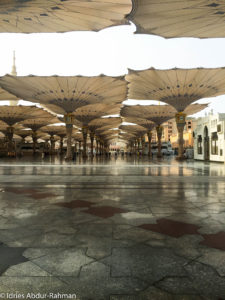
Our first stop was the Prophet’s mosque, aka Al-Masjid an-Nabawi, the largest mosque in Medinah and site where the prophet (pbuh) is buried. As you might imagine the Saudi heat, which is scorching year round, is especially, shall we say, attention grabbing in the summertime. Thankfully these unique, collapsible umbrellas on the grounds of the mosque were both functional and stylish. Pretty cool huh? (no pun intended, well, maybe a little pun was intended).
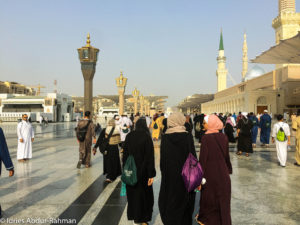
After an hour spent strolling the grounds of the Prophet’s mosque, our group made it’s way down a few side streets until we reached an unexpected piece of lush greenery that seemed out of place amongst the different shades of tan that characterized this desert town.
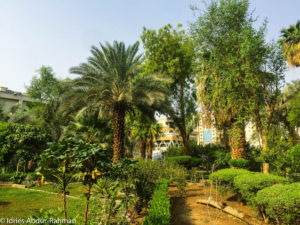
This beautiful green garden, known as the Saqeefah garden, is where it is said the Sahaba (companions of the prophet) gathered after his death to determine who the next khalifah (religious leader) would be. Unanimously Abu Bakar, who had been the prophet’s closest and most loyal companion, was chosen.
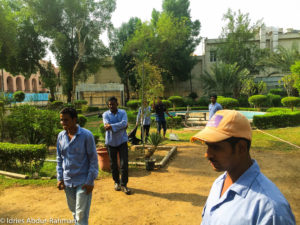
I couldn’t help but wonder how many gallons of water were used yearly to keep this desert oasis so lush and green.
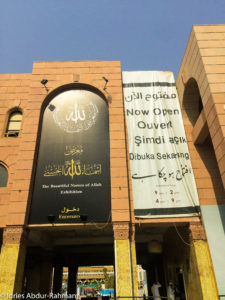
After leaving the Saqeefah garden, our next stop was The Beautiful Names of Allah exhibition. This stop was much appreciated for two reasons. #1). The art exhibition, devoted to the 99 attributes of God, was really cool. In Islam it is believed that there are (at minimum) 99 attributes of God and all of the art in this exhibition was devoted to these attributes. #2). The exhibition was really cool, and by cool I mean that it was air conditioned! Saudi Arabia in the summertime feels exactly how you think Saudi Arabia in the summertime would feel, HOT!! Parts of your body that you didn’t even know had sweat glands start sweating, so any opportunity to escape into AC was always much appreciated!
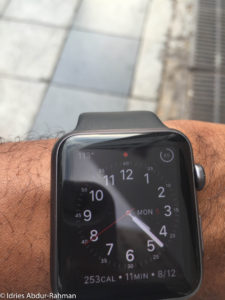
Unfortunately we couldn’t stay in the exhibition hall forever and within minutes of walking back into the Saudi furnace, my thin Midwestern skin cried uncle. So we took the first opportunity to sneak away from the group and head back to the hotel for a nice jet lag and heat induced mid-day nap.
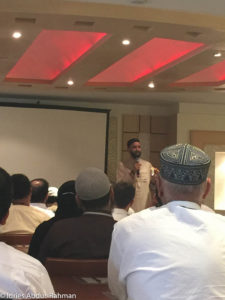
Later that evening we crashed (yup, that’s why I was sitting in the back, I didn’t want to be recognized as the interloper that I was) a Hajj prep seminar intended for another group. No matter how many seminars you attend and how many books you read, much of what you think you learned seems to evaporate when you actually touch Saudi soil. So, as you might imagine, a refresher was greatly appreciated.
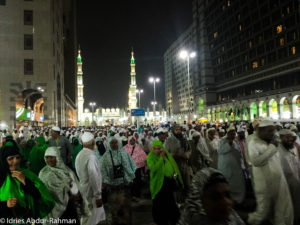
Being in Medinah, one of the two holy cities, we tried to pray all five of the daily prayers at the Prophet’s mosque. This often meant braving the crowds that, at the time seemed crushing, but were nothing compared to what we would encounter later during the actual Hajj.
Medinah Day 2-
On our second full day (and last day) in Medinah, our actual group finally arrived. This meant that my wife and I were no longer wayward orphans searching for a home. Our group’s leader organized a bus tour of Medinah’s other historical sites. This provided a nice, air conditioned opportunity for us to meet the people we would be spending the next two weeks with on this once in a lifetime journey.

Our first stop was Mount Uhud. This mountain was the site of the second battle between the muslims of Medinah and the army of Mecca, the city from which the muslims fled years earlier. This battle took place in 625 AD, one year after the famed battle of Badr, when the heavily outnumber army of Medinah celebrated victory over the Meccan army. The battle of Uhud ended quite differently however, and the muslims of Medinah were soundly defeated. The Prophet (pbuh) himself sustaining serious injuries and was nearly killed in this battle.
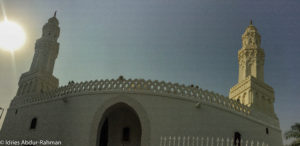
After leaving Mount Uhud, we made our way to Masjid al-Qiblatayn. The Qibla, now in Mecca, is the direction in which all Muslims pray their five daily prayers. Before Muslims prayed in the direction of Mecca however, they prayed towards Jerusalem. Masjid al-Qiblatayn is historically significant because the prophet (pbuh) is said to have received revelation to change the direction of prayer while praying at this mosque. This mosque therefore was the only in the world to have two prayer niches, one facing Jerusalem and the other facing Mecca.
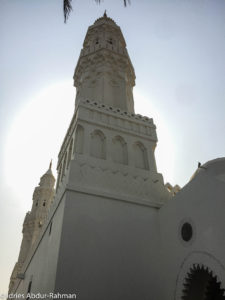
The architecture of the Mosque is very intricate and detailed. Unfortunately, I wanted to travel as light as possible, so my Canon was at home in my closet collecting dust. This meant that all of my photography would be limited to what my trusty little iPhone could capture.
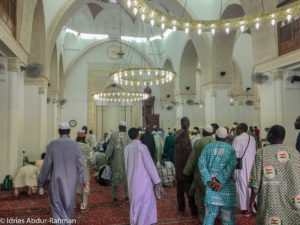
Sometime I feel like people overlook the internal architecture of mosques and other historic buildings in favor of the striking external features.
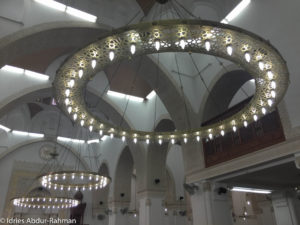
Call me crazy (okay, don’t call me crazy, that will hurt my feelings), but I think internal features like the large archways and the perfectly symmetrical hanging lights definitely give the external features a run for their money.
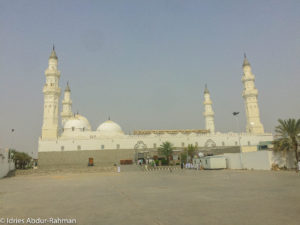
Our final stop of the day was the Quba Mosque. The Quba mosque is reported to be one of the world’s oldest mosques and it is said that the prophet (pbuh) himself laid the first stones.
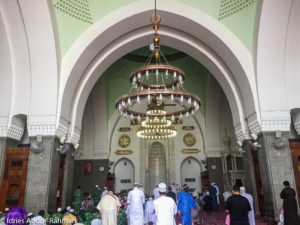
Unfortunately the original mosque was completely torn down in 1986 and a new mosque was built at the same location.
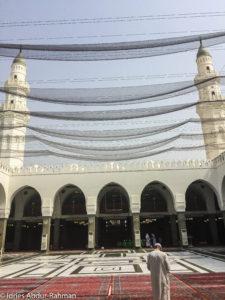
One of the more unique features of the new Quba Mosque is the large courtyard seen here. After leaving the Quba mosque, our bus made its way back through the streets of Medinah, getting us back to our hotel for an evening of relaxation and a good nights sleep. Tomorrow we were leaving for Mecca and our once in a lifetime adventure would officially begin!
BEFORE HAJJ: Umrah (the mini-Hajj)

The next morning started bright and early with Fajr (the morning prayer) and a light breakfast. Today we were heading to Mecca to perform Umrah, which is also known as the lesser pilgrimage since it only takes a few hours. The big event for this morning was entering the state of Ihram. Ihram is both a physical state and a spiritual state, and it is required of all pilgrims before performing Umrah or Hajj. Ihram has physical requirements (you wash and scent your body before putting on the two pieces of plain seamless white cotton that all of the men must wear) and spiritual requirements (you must refrain from everyday matters including sexual relations with your spouse, fighting and swearing). Physically, pilgrims are meant to be indistinguishable from one another (because regardless of our status in life, we are all equal in the eyes of God) and as close to naked as we can be (while still covering the important bits and bobs), so that we present ourselves to our Lord as we were on the day that we were born (rebirth). Spiritually, Ihram is meant to represent a state of purity and submission. Once in Ihram, your mind is meant to be focused on God, worship, your oneness with God and your quest for forgiveness, rebirth and renewal.

While this obviously isn’t me (I would never wear those shoes), this is a nice full body shot of what the Ihram looks like. It is simply two plain pieces of white seamless cloth (one for the top, the other for the bottom) and simple shoes that leave the ankles uncovered.
Check out part 1-The journey to Saudi Arabia HERE
Check out part 3-The Hajj pilgrimage HERE
Check out part 4-The journey home HERE
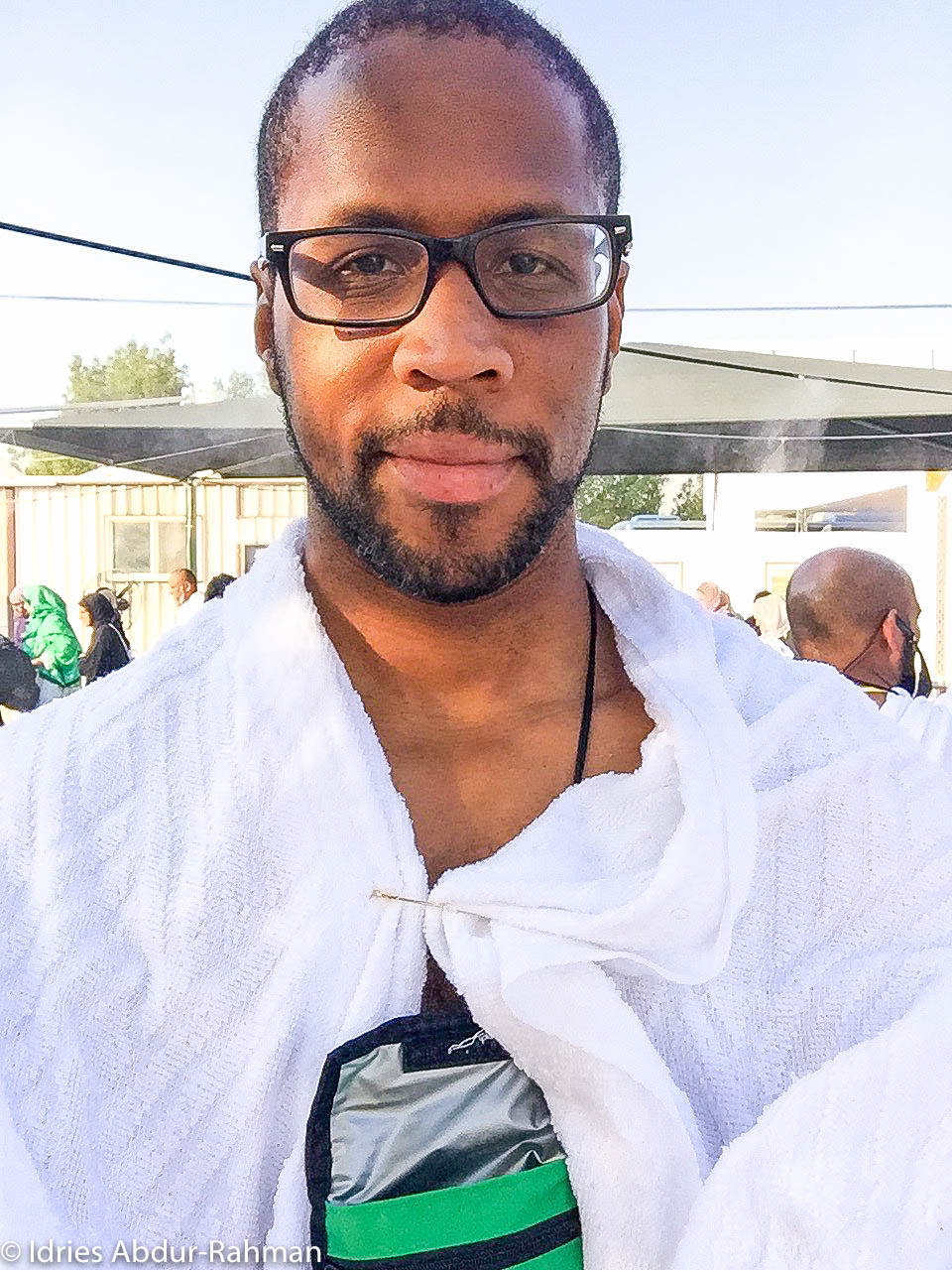

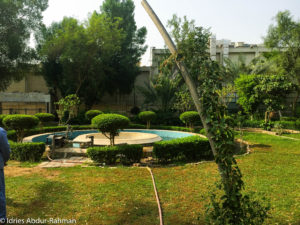
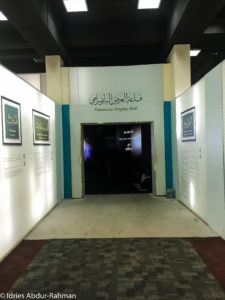
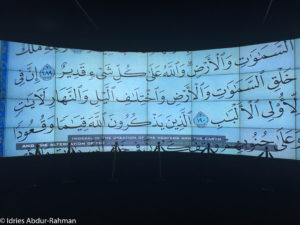
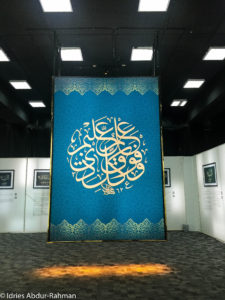





 May 19, 2018
May 19, 2018 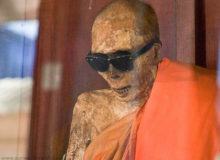



 October 20, 2023
October 20, 2023 
